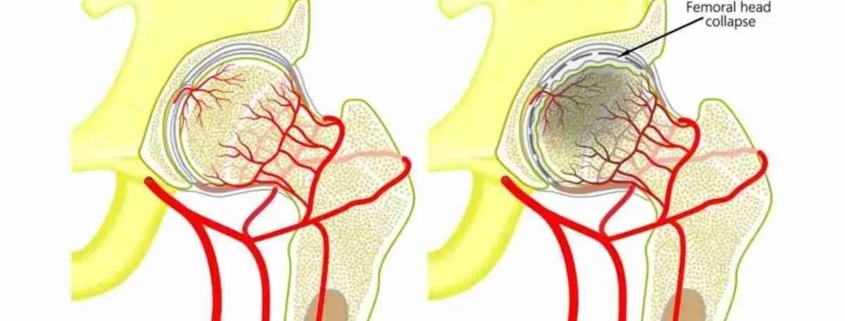
Osteonecrosis of the Humeral Head
Overview
Osteonecrosis of the Humeral Head, also known as Avascular Necrosis (AVN) or osteonecrosis, is a disease that results from the temporary or permanent loss of blood supply to the bone. This deficiency can lead to the death of bone tissue and eventually cause the bone’s collapse. The humeral head, the top of the upper arm bone that forms part of the shoulder joint, is one of the areas likely to be affected.
Types
There are no specific subtypes of Osteonecrosis of the Humeral Head. However, the disease can be categorized based on its stages, ranging from stage 1, where the anticipating collapse is only appearing in x-rays, to stage 4, where the articular surfaces have collapsed.
Causes
The exact causes of Osteonecrosis of the Humeral Head are often unknown. Risk factors though, include:
-
- Long-term use of corticosteroids
-
- Excessive alcohol consumption
-
- Major injuries or trauma to the humeral head
-
- Other health conditions, such as lupus, sickle cell disease, or cancer
-
- Certain medical treatments like radiation therapy or chemotherapy
Symptoms
Patients with Osteonecrosis of the Humeral Head might experience:
-
- Pain in the shoulder area, which may extend down the arm
-
- Decreased range of motion
-
- Swelling in the shoulder joint
-
- Stiffness
-
- The progression of osteoarthritis if left untreated
-
- Soreness or aching when lifting or carrying heavier objects
Diagnosis
Osteonecrosis of the Humeral Head is diagnosed through a combination of a patient’s medical history, a physical examination, and imaging tests. Imaging tests include X-rays, magnetic resonance imaging (MRI), or bone scans to confirm the diagnosis and evaluate the disease’s extent.
Treatment Options
Treatment for Osteonecrosis of the Humeral Head varies according to the stage of the disease:
-
- Non-surgical treatments: Physical therapy, pain management techniques, and non-steroidal anti-inflammatory drugs (NSAIDs).
-
- Surgical treatments: Core decompression surgery, osteotomy surgery, bone grafting, or total shoulder replacement, often recommended when the disease is at an advanced stage.
Living With Osteonecrosis of the Humeral Head
Living with Osteonecrosis of the Humeral Head demands adjustments to daily routines. Use of assistive devices may prevent falls and help with mobility. Regular exercise under the guidance of a physiotherapist can help maintain joint function and muscle strength. Regular doctor visits for check-ups and progress monitoring are crucial.
When to Seek Help
Consult with a healthcare professional if you experience persistent, inexplicable shoulder or arm pain, difficulty moving the shoulder, or if you have been exposed to known risk factors for osteonecrosis. Prompt diagnosis is essential; the sooner a diagnosis is made, the more options for managing the condition and potentially delaying its progression.
Don’t let the challenges of living with Osteonecrosis of the Humeral Head bring you down. Early detection, appropriate treatment, and adjustments to daily life can help manage the condition and maintain a good quality of life.
